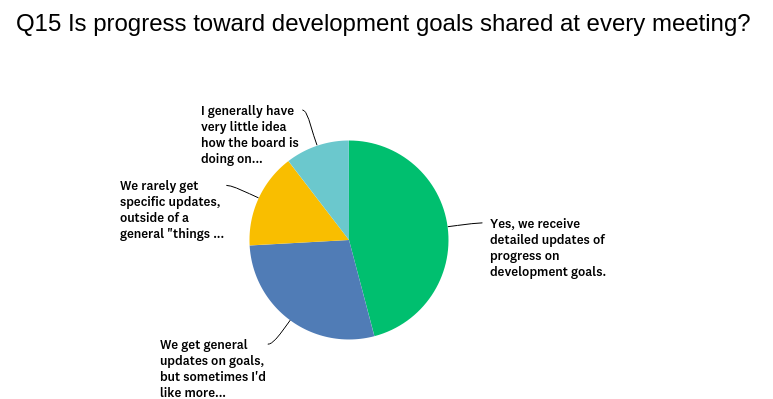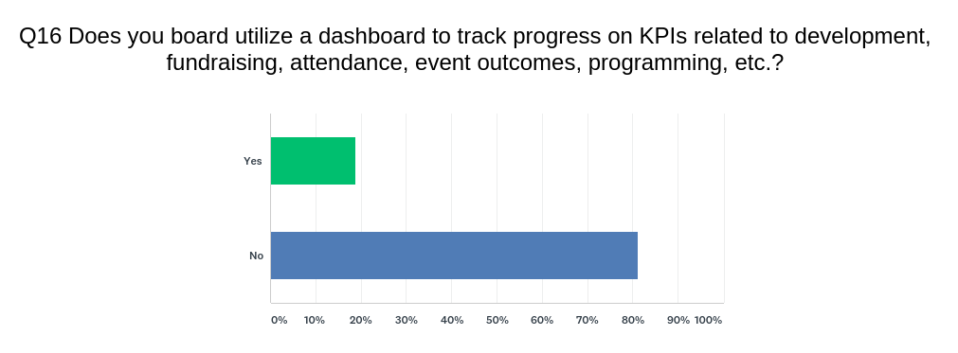When It Comes to Fundraising, Nonprofit Boards Want Specific Tasks and Goals


Every nonprofit would love for fundraising to be easier, and especially for their board to be more involved. As a culture, we have some phenomenal philanthropic events built into the year now. From Giving Tuesday to social media birthday fundraisers, there are a few great cues for board members to be involved in development. What if we could extend that level of engagement throughout the entire year? Believe it or not, there are ways to keep your board members thinking about fundraising opportunities all year long.
Boardable conducted its 2nd Annual Board Engagement Survey in 2019 — more than 600 nonprofit board members, staff members, volunteers, and consultants took part. The goal of the survey was to gauge the state of board member engagement in the nonprofit sector by measuring factors such as attendance, meeting participation, fundraising involvement, productivity between meetings, governance practices, and recruiting.
The results clearly show that board member engagement with development is a big concern. Here is a word cloud of a question asking respondents where they felt their board engagement was most lacking. Notice the emphasis on fundraising vocabulary.

Let’s look at some concrete ways to increase board member involvement in fundraising not just during Giving Tuesday or an end-of-year campaign, but all year long.
Most board members are well-intentioned but busy professionals. More than anything, they need regular and thorough communication to know when and how their help is needed by a nonprofit. According to the Board Engagement Survey, over half of all respondents say they would like more information on the board’s progress toward goals, with a full 10% saying they have no idea how the board is doing toward fundraising.

Without regular updates, how would your board members know when to help? A crucial component to board engagement is to keep everyone aware of where fundraising goals stand. If a board member can clearly see that five donors from a list still need to be called, or that there are still two unsponsored tables at an event, they can take concrete actions to help the effort. But they can’t help if they don’t know help is needed, so communicate well and communicate often.
The surest way to have no engagement from your board between big campaigns is to make vague calls-to-action to no one in particular. Whether you’re the board chair or executive director, by reaching out to each board member individually, you not only build rapport, you also increase the probability that he or she will do something. Additionally, make sure that you have a list of simple and specific things the board member can do to help. This may be (x) number of phone calls, (y) introductions to the organization per month, or whatever metric makes sense. Be sure to provide all the information or verbiage the board member needs to accomplish the task and be available for questions. When asked if board members open doors and make introductions for fundraising, almost a third of survey respondents said board members would help if they’re asked to do something specific.
One way to help board members feel more engaged in fundraising all year round is to introduce an element of friendly competition. Consider a public scoreboard or a dashboard that is visible to board members and shows individual progress.

Knowing that some accountability is built into the board experience has the effect of motivating extra effort and attention between meetings. Depending on the personality of your organization’s board, you can mix in some inside jokes or prize incentives to make it more fun. On one board I know of, board members proudly compete for the possession of a trophy made from a sneaker. By showing major progress points to board members, you can have better engagement than ever before.
The results from this Annual Board Engagement Survey are clear. Nonprofits see a lack of involvement from their boards, but board members largely want to do better. By providing simple ways to help and regularly, clearly communicating progress, you can engage your directors in development all year round — not just on Giving Tuesday.

